When the App Store first opened in 2008 in conjunction with the launching of the iPhone, there were just 500 apps available. The market for mobile apps was only $206 million back then.
Furthermore, up to 86% of viewers utilize other devices in addition to TV, with 68%–76% of viewers utilizing smartphones for social networking, information research, and message replying.
All things considered; in-app mobile advertising offers a fantastic chance for marketers. It makes sense for marketers and advertisers to use mobile advertising to reach a specific audience because so many people rely on them. Learn about mobile advertising in this article, along with how it differs from in-app advertising and how it functions.
Important Points to consider:
Displaying advertisements within mobile apps on smartphones and tablets is known as in-app (also known as mobile app) advertising.
Software-development kits (SDKs) are used by mobile apps to show advertisements; hence, developers must incorporate the SDK of the specific AdTech vendor into their app.
In-app advertising (IAA) is a major source of income for organizations in the gaming, social media, utility, and entertainment sectors.
By paying app developers to display advertisements inside their mobile applications, in-app advertising enables publishers to offer their content at no cost to consumers, increasing downloads while generating a steady stream of income.
These days, the majority of apps in the app economy are free to download, with just about 5% of users making in-app purchases (IAP) to support the app industry.
Data.ai’s analysis indicates that in the top mobile-first economies, users spend five hours a day on their Android phones. Additionally, 255 billion apps will be downloaded globally by 2022, with users downloading more than 485,000 apps per minute.
Playable advertisements, interstitial ads, offerwalls, rewarded video commercials, expandable ads, regular banner ads, and native ads are the primary kinds of in-app ad formats.
By displaying advertisements to consumers while they are using an app, in-app advertising is a fantastic method for app publishers to increase revenue. Publishers must make sure that the advertisements don’t interfere with the user’s experience and are pertinent to the material the user is already seeing, even though this can lead to increased user engagement with the advertising. App producers risk a decrease in user engagement if they don’t.
This post aims to provide you with a thorough understanding of in-app advertising, including its operation and the key trends that influence it. We go over the advantages of display advertising on mobile websites over in-app advertisements for publishers, and we conclude by talking about the top in-app advertising networks.
The Rise of Mobile Marketing
The following are a few instances that helped to mold mobile advertising into what it is today:
The first text message was delivered in 1992, despite the fact that the portable mobile phone was invented in 1973.
Only in 1997 did a Finnish news source start providing free news headlines via a short message service (SMS).
In 1999, the first phone connected to the internet was released.
The Wireless Advertising Association in New York and the Wireless Marketing Association in London were founded in 2000, coinciding with the birth of mobile marketing. These two organizations merged to establish the Mobile Marketing Association in 2003.
The first popular mobile advertising platform, AdMob, was released in 2006, allowing publishers and web developers to make money from mobile advertisements.
Google’s Mobile AdSense was made available to the general public in 2007 and enabled websites designed for mobile browsers to show the same advertisements as standard websites.
The first iPhone was scheduled to launch in early 2007—before AdSense was made available.
Shortly after the iPad went on sale in 2010, Apple unveiled iAD, their advertising platform.
Facebook introduced its mobile ads in 2012. Because there was no available advertising prior to its launch, Facebook did not get any revenue from the mobile app.
When the first iPhone was released in 2007, it completely transformed the landscape of mobile advertising by enabling users to interact with ads in new ways. Ads could now be rotated, enlarged, or downsized thanks to the touch-sensitive, multi-sensor interface.
Given the variety of purposes for which people use apps, it is not unexpected that the amount of time spent “in-app” rises annually (YOY).
Though marketers and advertisers have more hours and ways to contact users every day, users are spending more time in-app than on the mobile web these days. As a result, marketers and advertisers need to come up with creative strategies to capture the attention of their target audience.
In-App Advertising: What Is It?
Through the use of in-app advertising (IAA), developers can make money from their apps by letting advertisers show ads to users. Once developers and ad buyers reach an agreement through programmatic ad buying, these in-app adverts are served through app ad networks. The ad network employs algorithms to find and instantly provide users with a high-quality advertisement when an app requests one.
Developers can select from a variety of ad types to monetize their apps. In-app advertisements are available in a variety of formats and sorts to fit the viewable area. These consist of rewarded videos, in-app display ads, native ads, and interstitial display ads, among others.
How Do Advertisements in-App Operate?
The way in which in-app advertising operates is by assisting marketers in placing advertisements within applications. The buyer and seller components make up the mobile app advertising ecosystem. In their capacity as intermediaries, ad networks help advertisers (the buyers) and publishers (the sellers of ad inventory) conduct seamless transactions with app developers.
This is the operation of in-app ads:
- To deliver an advertisement, the user’s smartphone app sends a request to the mobile ad network or ad exchange.
- The best and highest-paying advertisement from a variety of advertisers is selected by the ad network or exchange using an algorithm that considers a wide range of variables, including user data.
- Then, in real-time, the advertisement is served to the mobile app.
- Why Is Advertising Within Apps Important?
- Because it enables app developers to make money, businesses to connect with their target market, and users to find new, relevant items and services, in-app advertising is crucial.
For the following reasons, it is a crucial component of mobile app monetization:
- Revenue Generation: Developers can make money from clicks or impressions on the adverts they display to users. This makes it possible for developers to keep creating new apps and enhancing user experience.
- User Engagement: You can utilize in-app advertising to pique users’ interest and motivate them to act. This can boost sales and increase brand recognition for companies.
- Targeting: Businesses can display more relevant and individualized advertisements to consumers by compiling information on user behavior and interests. Increased engagement and conversion rates are made possible by this.
- Efficiency: A publisher’s inventory can be allocated more effectively thanks to in-app advertising, which makes use of techniques like in-app header bidding.
- In-app advertising can be a vital source of income for app creators. Developers can make money with their apps without having to charge users directly by including advertisements. This is particularly crucial for free apps, as their main source of income is advertising.
In-app advertising offers marketers access to a highly engaged and niche audience. It is possible to tailor in-app advertisements to target particular interests, habits, and demographics. Because marketers simply pay for impressions or clicks and have complete control over their budget, in-app advertising can also be quite affordable.
Finally, there are some advantages that users may receive from in-app advertising. Users can learn more about goods, services, or events they’re interested in from relevant advertisements. Advertisements may occasionally even provide discounts, special offers, or other incentives.
Comparing mobile websites and apps
It has been demonstrated that mobile apps may draw in users and lead them through the brand’s marketing funnel. Additionally, although some mobile websites and apps are similar, there are some important distinctions, especially when it comes to digital advertising.
While mobile websites use cookies for tracking, applications (which require user consent) use device IDs for tracking, providing developers with useful audience data that cookies cannot provide. Publishers will need to know this going forward in the post-third-party cookie digital environment.
Device IDs provide developers with information such as geolocation data, mobile device kinds, operating systems, gender, age, and wireless carrier, while cookies offer basic user data like browsing history and purchasing patterns.
Additionally, because they are resistant to ad blockers and spend a significant amount of time in applications on their phones, in-app advertising is beneficial for all mobile publishers.
Ad placement statistics are still very strong, even though the pandemic has slowed the overall growth of mobile app advertising expenditure. It is anticipated that worldwide ad revenue from apps will reach $220.8 billion in 2022. ..The in-app purchase market is anticipated to reach $284 billion by 2026, growing at a compound annual growth rate (CAGR) of 20.8% between 2023 and 2028.
Offering a first-rate mobile experience has grown in significance for all companies hoping to increase third-party user engagement and brand visibility.
Let’s examine the advantages of in-app mobile advertising in more detail.
- Method of Tracking: Cookies are used to track via device ID.
- Available User Data: Operating system, device type, network provider, age, gender, and basic information like browsing and purchasing history
- Ad Blocking More resistant to ad blockers or susceptible to them
- The US’s Average Daily Use is 23 minutes, or 3 hours and 47 minutes.
- Advantages of App-Based Advertising
- Now that we understand what in-app advertising is, let’s take a look at some of the advantages it offers publishers.
1. Increased Prospects for Monetization:
Publishers and marketers have far more flexibility to monetize mobile apps than they do with mobile websites.
In-app advertisements have shown to be an effective monetization tactic for mobile ad publishers. These days, mobile app developers monetize their creations by placing advertisements within their apps. For instance, Zillow, the industry leader in online real estate, posts advertisements for affiliated companies, giving them access to target consumers via their app.
2. More Time Is Spent by Users on Apps:
Ninety percent of mobile users’ time—more than three hours a day—is spent using applications. This indicates that apps are now the main player in terms of mobile experiences, with mobile web coming in a distant second.
3. Increased Audience Engagement:
The mobile app audience is significantly more captive and engaged than traditional marketing channels, which makes them the perfect target market for display advertising. This increases interest, click-through rates (CTRs), conversions, and eventually ad income for app publishers.
4. Increased Conversion Rate:
According to studies on in-app advertising data, in-app advertisements have a click-through rate (CTR) of 0.56% as opposed to 0.23% for mobile web advertisements. Additionally, in-app advertisements have a user retention rate that is four times greater than traditional ads and a customer conversion rate that is three times higher.
5. Precise Mobile Ad Targeting:
Advertisers and publishers can only gather a limited amount of information about mobile users using cookies when they are on websites. Ad publishers can, however, obtain more specific data about an application’s user, such as age, gender, operating system, device type, location, and more, by using the device ID.
6. Increased Customization:
Ad publishers may develop highly targeted and customized ads with in-app-based mobile advertising, increasing the likelihood that your audience will be engaged and persuaded to click through. Additionally, before installing an app, developers always obtain consent from mobile users through the app store to collect their data. Additionally, because they can better pinpoint their audience, ad publishers have more control over the ad-serving procedure.
Nevertheless, bear in mind that the most recent version of iOS 14 is projected to reduce the cost per mile (CPM), which will make customized advertising much more difficult. This is due to the recent loss of data monitoring across apps. As a result, immersive ad units and first-party data will both greatly rise in value.
7. Better Outcomes:
AppSavvy claims that in-app advertisements outperform banner ads on mobile websites by a factor of 11.4. This is due to the fact that their special placement during the user’s journey via the app enables them to demand higher levels of user involvement. However, a user might choose to ignore banner adverts, which results in low engagement.
8. Absence of Ad Block:
It’s likely that a person who has installed an ad blocker won’t see banner advertising. Because of the freemium business model, which enables companies to sell advertisements to mobile users who can use the app without paying any money, in-app advertisers are not overly concerned about this.
Potential Negative Effects of In-App Advertising
Brands and marketers must take into account the disadvantages of in-app advertising when they raise their marketing budgets for both mobile web and in-app advertising.
It can be difficult to have a successful in-app advertising campaign if you don’t perform a cost comparison. Ensure that programmatic planning is given adequate time. The following are some essential considerations:
1. Extremely Rival Channel:
It has become a more competitive and costly marketing platform as more and more advertisers are attempting to place their advertising within apps.
2. It Is Based on Your Industry:
In cases where your intended audience lacks app usage experience or is not well-informed about smartphones, mobile app advertisements might not be the most effective marketing strategy. You won’t see click-through rates that are high enough.
3. Programmatic Deals and Private Marketplace:
Programmatic agreements that are customized, guarantee that in-app advertising campaigns are geared to reach highly targeted audiences with the most viewable mobile ad impressions at the ideal mobile moment. Programmatic arrangements enable publishers on a supply-side platform to collaborate with advertisers on a demand-side platform to optimize ad revenue for advertisements across all app categories by providing high-quality inventory in all major ad formats.
The Top 6 In-App Networks for Advertising
Here are a few of the top ad networks you may want to use if you’re an ad publisher looking for the best mobile app networks:
1. Facebook / Instagram:
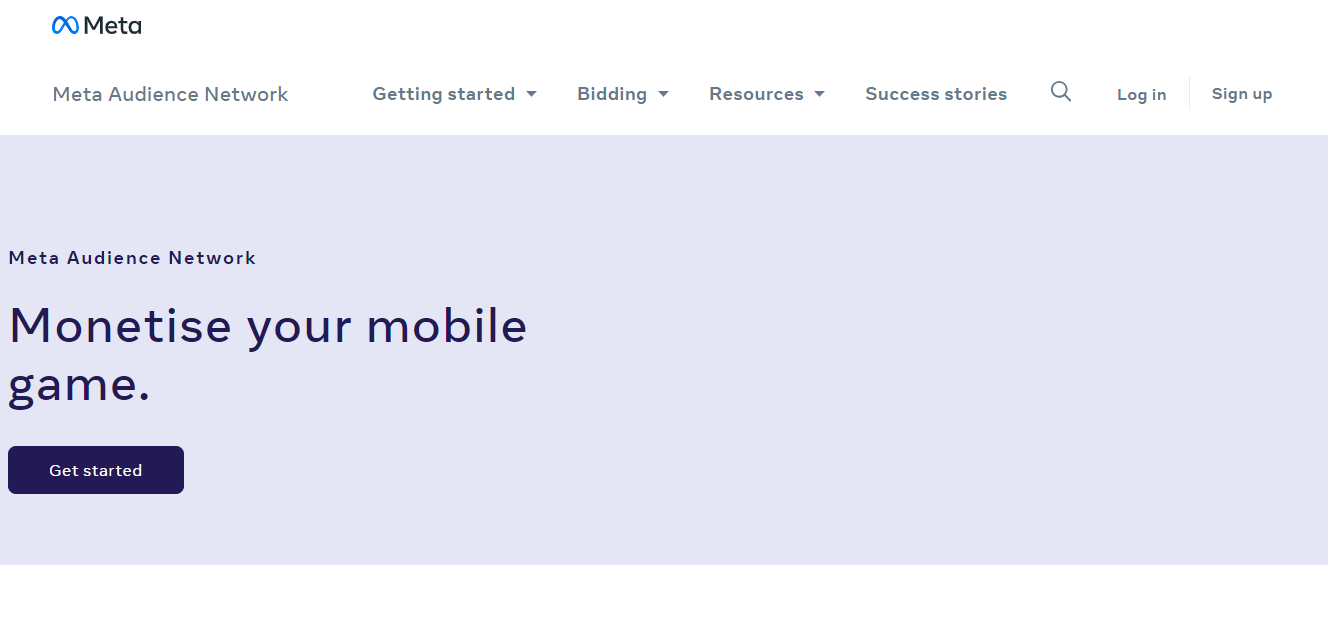 These social media behemoths rank among the top ad networks for reaching your target market with a variety of ad formats included in a strong, programmatic campaign.
These social media behemoths rank among the top ad networks for reaching your target market with a variety of ad formats included in a strong, programmatic campaign.
Facebook generated $116.6 billion in income in 2022 thanks to its vast reach. With a successful in-app marketing plan, it can garner hundreds of thousands of impressions and thousands of conversions.
Additionally, you have flexibility with the platforms of Facebook and Instagram regarding audience, scheduling, and advertising budget. Advertisers can target audiences according to demographics including age, region, gender, employment function, relationship status, and likes and dislikes.
- Founded in: 2004
- Headquarters in: California, USA
- Allowed countries: Almost All
- Payment methods: Credit or debit cards (American Express, Discover, Mastercard, Visa, JCB), PayPal, Bank account (direct debit) in supported countries, Local manual payment methods in supported countries and currencies.
2. Publift:
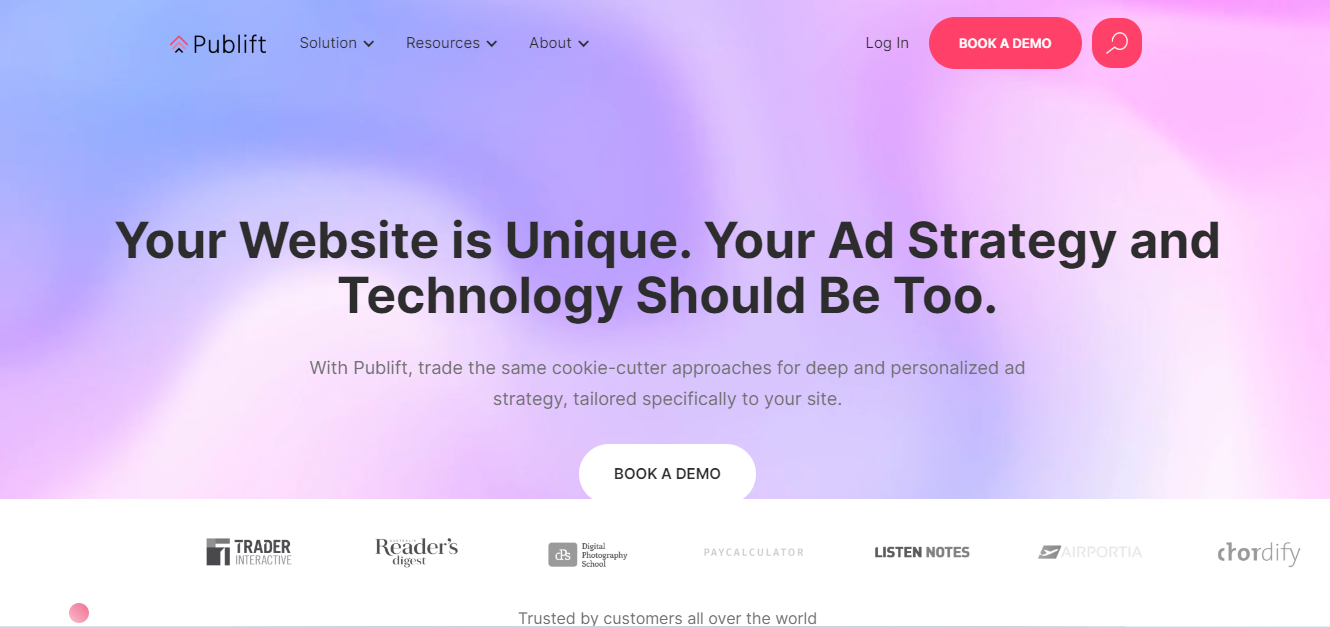 Since 2015, Publift, a programmatic advertising technology, has assisted publishers in increasing their ad revenue by up to 55%. It gives app publishers access to over ten app advertising demand partners, facilitating full-stack Google open bidding as well as real-time server-side header bidding auctions. The end result is better revenues due to the greatest exploitation of premium quality in-app ad inventory.
Since 2015, Publift, a programmatic advertising technology, has assisted publishers in increasing their ad revenue by up to 55%. It gives app publishers access to over ten app advertising demand partners, facilitating full-stack Google open bidding as well as real-time server-side header bidding auctions. The end result is better revenues due to the greatest exploitation of premium quality in-app ad inventory.
Developed by data scientists and engineers, Publift is an award-winning platform and a Google Certified Publishing Partner (GCCP) with extensive knowledge of the app advertising space. In addition to helping publishers with their advertising needs, it also goes above and above to support them in increasing traffic, gaining new users, offering comprehensive analytics on every facet of their app, and offering top-notch support.
- Founded in: 2015
- Headquarters in: Sydney, with offices in Melbourne, Ireland, and the US
- Allowed countries: Almost All
- Payment methods: direct bank transfer
3. AdMob:
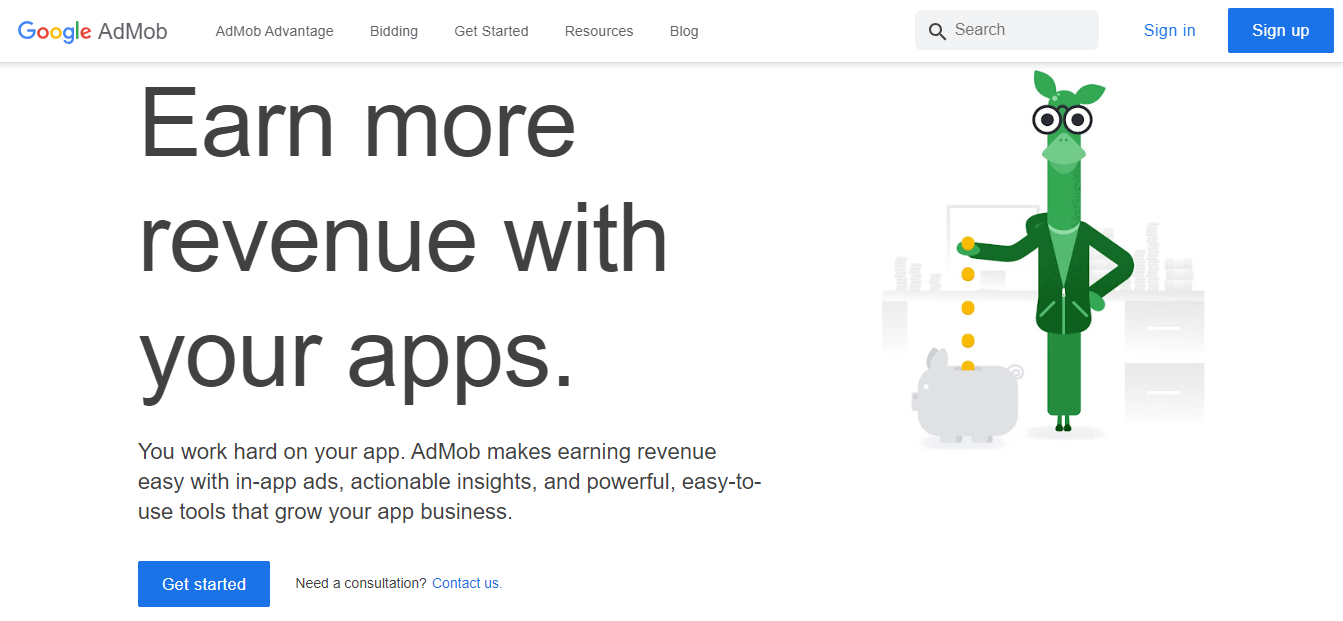 AdMob is Google AdSense’s mobile version, and it is owned by Google. For novice marketers, this ad network works well because it is user-friendly and intuitive. Advertisers can provide their programmatic ad campaign using text, graphics, video, or interactive media. Additionally, they can select from a variety of forms, such as reward advertisements, interstitials, videos, banners, and native ads.
AdMob is Google AdSense’s mobile version, and it is owned by Google. For novice marketers, this ad network works well because it is user-friendly and intuitive. Advertisers can provide their programmatic ad campaign using text, graphics, video, or interactive media. Additionally, they can select from a variety of forms, such as reward advertisements, interstitials, videos, banners, and native ads.
- Founded in: 2006
- Headquarters in: Mountain View, California, U.S.
- Allowed countries: Almost All
- Payment methods: Check, Electronic Fund Transfer (EFT), EFT via Single Euro Payments, Area (SEPA), Wire Transfer Directly to Bank Account, Rapida.
4. Smaato:
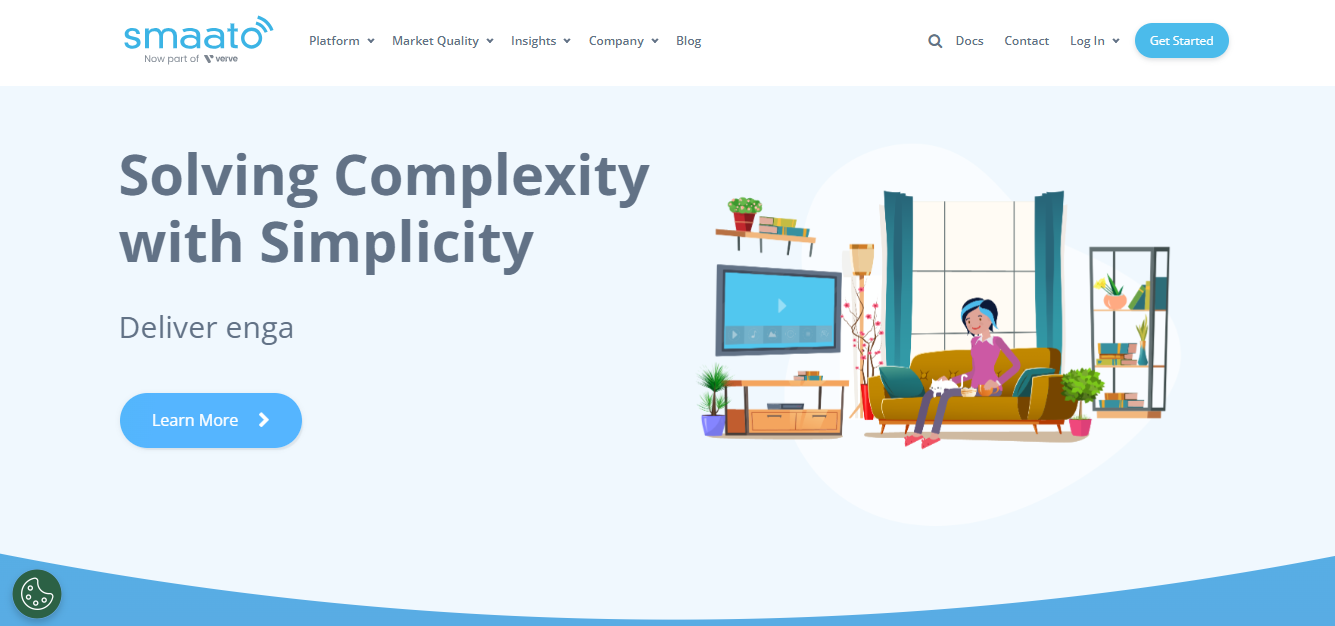 Smaato is a fantastic mobile ad network for individuals wishing to post ads, boasting over 90,000 advertisers. Due to Smaato’s substantial advertiser base, publishers stand a good chance of making an advertising space sale. Additionally, you may maximize real-time bidding by utilizing SPX, or the Smaato Publisher Platform.
Smaato is a fantastic mobile ad network for individuals wishing to post ads, boasting over 90,000 advertisers. Due to Smaato’s substantial advertiser base, publishers stand a good chance of making an advertising space sale. Additionally, you may maximize real-time bidding by utilizing SPX, or the Smaato Publisher Platform.
- Founded in: 2005
- Headquarters in: New York City, United States
- Allowed countries: Almost All
- Payment methods: PayPal, Wire Transfer, and eCheck/Local Bank Transfer
5. Unity Ads:
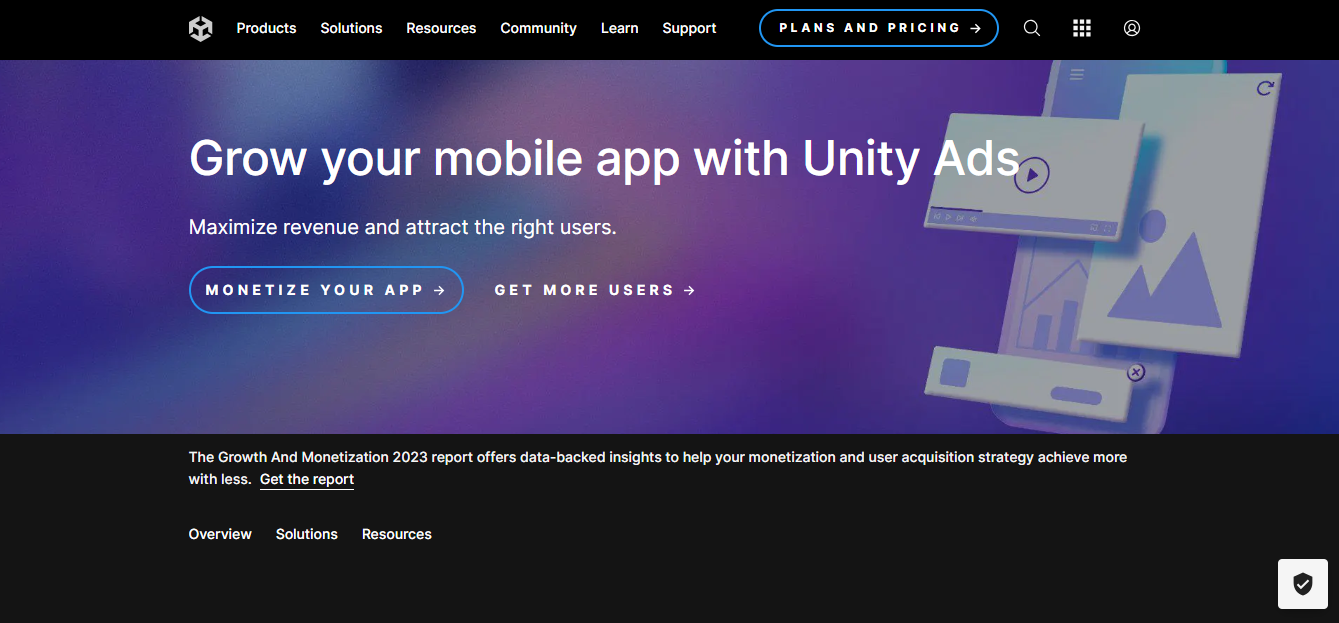 Unity ads is a great option if you are targeting gamers because it was designed specifically to display video ads in order to monetize mobile gaming apps. The ad network works with all game engines, such as Corona, Marmalade, and Adobe Air, and is compatible with iOS and Android mobile operating systems.
Unity ads is a great option if you are targeting gamers because it was designed specifically to display video ads in order to monetize mobile gaming apps. The ad network works with all game engines, such as Corona, Marmalade, and Adobe Air, and is compatible with iOS and Android mobile operating systems.
Using this one-stop shop network, advertisers may also integrate in-app purchasing, allowing users to browse and buy things without ever leaving the game.
- Founded in: 2004
- Headquarters in: San Francisco, California, United States
- Allowed countries: Almost All
- Payment methods: PayPal, Alipay, Credit card, Ad revenue transfers from the Unity Ads Monetization dashboard.
6. InMobi:
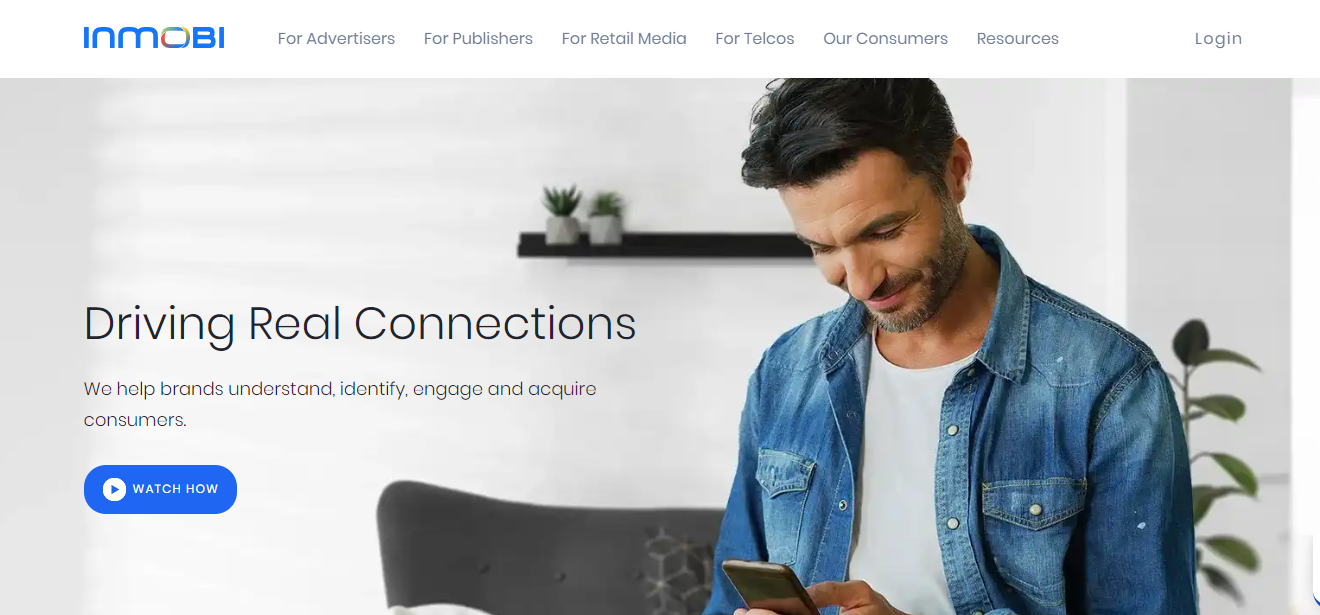 As one of the top independent mobile ad networks, InMobi can manage apps and mobile web, allowing you to manage various ad campaigns on one platform. The network offers ad campaigns in CPI and CPC models and supports both iOS and Android. The various ad forms include rich media, interstitial, video, banner, and native.
As one of the top independent mobile ad networks, InMobi can manage apps and mobile web, allowing you to manage various ad campaigns on one platform. The network offers ad campaigns in CPI and CPC models and supports both iOS and Android. The various ad forms include rich media, interstitial, video, banner, and native.
- Founded in: 2007
- Headquarters in: Bengaluru
- Allowed countries: Almost All
- Payment methods: Electronic Fund Transfer or PayPal
Top In-App Pricing Structures
There are various in-app pricing schemes, each with advantages and disadvantages specific to publishers and advertisers. The various price models are mentioned here, along with the advantages and disadvantages of each.
1. Per Mille Cost (CPM):
CPM is most effective for marketers trying to increase brand visibility because it allows advertisers to pay publishers each time an ad receives 1,000 impressions.
Advantages
- The most affordable in-app pricing approach for marketers.
- For publishers, simply displaying advertisements will suffice to get paid.
- Cons
- For advertisers: Conversions and clicks are not guaranteed by merely displaying the advertisement.
- Publishers: Poor payout in comparison to alternative pricing structures.
2. Click-through Rate (CPC):
Every ad click under this approach generates revenue for the publisher. If you have a set budget and want to drive more visitors to your page, the cost-per-click (CPC) model is a wonderful choice.
Advantages
- For advertising, just pay when users click on your content.
- Publishers: Depending on the advertiser and campaign goals, they can demand a high payment per click.
Cons
- Advertisers should pay for each click, even if they are inadvertent or accidental and don’t result in sales.
- For publishers: Demands more work because reaching your goals may need serving more impressions.
3. Per-Action Cost (CPA):
Under the CPA model, the publisher receives payment only when the intended audience completes a particular activity, like registering or making a purchase. It works best for advertisers who want to prompt a particular action or outcome.
Advantages
- For marketers: it’s a low-risk pricing strategy that guarantees budgets and targets match.
- For publishers: Higher rates can be attained rapidly with good outcomes.
Cons
- For marketers: The potential for brand recognition in an advertisement may be hidden if revenue targets are prioritized.
- Publishers: There is no assurance of revenue until the client completes the intended task.
4. Installed Cost (CPI):
Publishers receive payment under the CPI model each time a customer installs the app. For advertisers hoping to boost install counts, this is perfect.
Advantages
- Advertisers should only pay consumers who express interest in utilizing their app.
- Publishers: A well-paying pricing structure that permits a higher price.
Cons
- Advertisers should be aware that paid user installs do not ensure sustained user interest.
- For publishers: Requires perseverance and campaigns that are optimized and need constant observation.
- Examples and Formats for In-App Advertising
- You must select the appropriate ad format for your target demographic in order to give the greatest content and user experience while showing third-party mobile ads.
- You can employ interstitial, rich media, video, rewarded video, native, and banner advertising as popular in-app ad formats.
This is a brief overview of the various ad formats that are available:
Formats for in-app advertising: interstitial advertisements
1. Interstitial Commercials:
Full-screen banner advertising that alternates between game levels makes up this ad type.
2. High Definition:
These mobile in-app advertisements are supplied utilizing HTML, JS, CSS, and image files in both banner and pop-up formats.
3. Accomplished Video Commercials:
As the name implies, this ad type rewards gamers for watching video advertisements.
4. Videos for Advertisements:
Native video advertisements can be skipped by viewers in a matter of seconds if they are not interested. They are shown in mobile video format. Engaging users with mobile video ads can be a terrific strategy.
5. Native Advertisements:
These are textual or video advertisements that seem much like the website’s editorial material. They fit well with the design and are not obtrusive.
6. Banner Advertising:
These are straightforward, static advertisements that appear at the top or bottom of the application. They are widely supported and very reasonably priced.
7. Playable Commercials:
Playable advertisements are those that, in order to increase demonstrability, offer a gamified or playable version of the game.
Strategies for In-App Advertising
The following are some recommended methods and techniques for in-app advertising:
- Prioritize the user experience: When integrating in-app advertising, the user experience should come first. Negative reviews and low retention rates are likely outcomes of interfering or annoying users with ads. Instead, go for advertisements that add value and enhance the customer experience.
- Targeted advertising: Based on demographics, activity, and interests, target adverts to particular user categories using data and user insights. Your advertisements will become more relevant and effective as a result.
- Optimize ad placement: Try out several ad locations inside the app to determine which ones work best. Ads should not be placed where buttons or other interactive components could be misconstrued.
- Frequency capping: To prevent overexposure to advertisements, restrict the quantity of ads users view in a certain period of time.
- Advertisements with incentives: You might provide prizes or in-app purchases to users in return for watching advertisements. This may boost interest and offer a better overall user experience.
- Video advertisements: Compared to other ad types, video ads are typically more memorable and engaging. They can also offer extra details regarding the good or service that is being promoted.
- Test several ad formats to determine which ones work best in your application. Test interstitial advertisements against native ads, for instance, to discover which one generates more clicks or conversions.
- Transparency: Be open and honest with users about the use of their data and the use of in-app advertisements. This will enhance user satisfaction generally and contribute to the development of trust.
- A/B testing: Examine several ad creatives and messaging to see which ones your audience responds to the best. Ad performance in general and click-through rates in particular may benefit from this.
The engagement, retention, and general performance of the app can all be enhanced by implementing these best practices and tactics.
Conclusion:
For app developers, well-executed in-app advertising may be a fantastic source of income. To get the most out of your mobile advertising strategy, don’t forget to monitor the source of your ads, think about utilizing interactive video ads, and make sure you are utilizing programmatic sales and private marketplaces.

